The Complete Guide for Exercising During Menopause
“Grab those hand weights and get ready to go into a squat position,” a popular exercise guru cheerily calls out in her exercise video. So a group of women, ages 16 to 52, dutifully get their weights and huff and puff their way through the routine for 20 minutes three times a week. The oldest of them, Maria, has been doing aerobics for a year. She firmly believes that the workouts have helped her avoid the hot flashes, headaches, mood swings, sleeplessness and depression that is commonly experienced by women as they go into their pre-menopause stage — and she may be right.
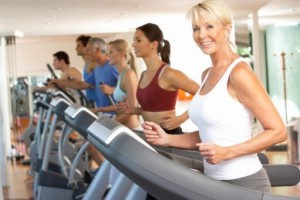 Why Exercise is Good
Why Exercise is Good
Numerous studies have shown that exercise can be an effective antidote to the rough days caused by the hormonal changes when women hit their late forties or early fifties.
The most common symptoms, like hot flashes and sleeplessness, are associated with weight gain. Exercising also helps prevent weight gain and loss of muscle mass that goes with menopause.
The many benefits of regular exercise may also include boosting your mood, strengthening your heart, and even promoting bone density.
While many women opt for hormone replacement therapy (HRT) as a way to cope with the oftentimes debilitating physical and mental challenges of menopause, HRT often puts women at risk for blood clots, heart disease, breast cancer, Type 2 diabetes, osteoporosis, loss of muscle strength and dementia. Those push-ups and crunches are looking better by the minute, aren’t they?
So, it’s on with the sweat pants and off to the gym we go!
What are the Best Exercises?
Dr. Alexis Abrahams, a gerontologist (a doctor specializing in the elderly), advises that exercising consistently is the key to getting the best out the exercises rather than the kind of exercise. Women in their 40s, 50s and 60s should aim to do any of these three forms of exercises:
- Aerobic/cardiovascular – these exercises strengthen the heart and lungs and can burn calories to help with weight management. If you’re a beginner, start with 10 minutes a day and gradually increase as you get stronger.
- Walking
- Jogging
- Tennis
- Cycling
- Working out on the elliptical machine, StairMaster
- Dancing – ballroom, zumba, salsa
- Strengthening – When menopause hits, estrogen levels go down along with muscle mass. Working out on machines can help strengthen muscles and bones, burn body fat and rev up your metabolism. Choose a weight or resistance level that will tire your muscles after 12 repetitions.
- Hand weights
- Dumbbells
- Resistance bands
- Exercise machines that strengthen muscles and bones and help manage weight
- Flexibility/stretching/range of motion – exercises that keep our aging bodies more flexible and helpful for improving (and maintaining) joint function if you have arthritis.
- Stretching exercises
- Yoga, taichi
- Pilates
Before You Start
Always check with your doctor before you consider any strenuous activity. Ask what kind of exercises are safe and how much you can do without causing additional harm to your body. If you have bad knees, avoid running or jogging or jumping which will put additional stress on the knees. For women with osteoporosis, don’t do activities like biking or any sport that would put you at risk of impact that could break a bone. Better scratch those judo classes from your list!
Whatever the activity, choose exercises that you enjoy and chances are you’ll continue doing them regularly.
How Much Should You Do?
According to the Centers for Disease Control and Prevention, women younger than 65 should spend at least 150 minutes a week on moderate-intensity aerobic exercises, like walking or 75 minutes of vigorous aerobic exercises. This can be broken down into 30 minutes, five times a week or smaller increments such as 15 minutes daily.
Do strength training at least twice a week, making sure to rest for at least one day between these sessions. Do balance and stability exercises for 5 minutes every day, along with 1 to 3 minutes of stretching twice a day. If you choose to include yoga and meditation in your exercise regimen, do them on an as-desired basis, especially when you’re stressed and need something to keep you from throwing a brick at your loud next-door neighbor. Or your boss.
Here’s a sample workout schedule from the excellent book “The Ultimate Guide to Taking Control of Your Health and Beauty During Menopause” by Staness Jonekos.
- Monday: Warm-up/Stretch, strength training, cardio
- Tuesday: Warm-up/Stretch, cardio
- Wednesday: Warm-up/Stretch, strength training, cardio
- Thursday: Warm-up/Stretch, cardio
- Friday: Warm-up/Stretch, strength training, cardio
- Saturday: Warm-up/Stretch, cardio
- Sunday: Rest
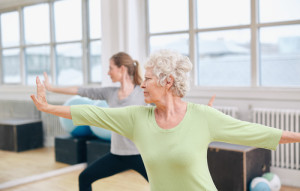 Doing your exercises right
Doing your exercises right
Getting on the exercise bike or walking everyday just doesn’t cut it. To reduce injury and to make the most of exercising, make sure you steer clear of these 6 common mistakes.
- You only do cardio
Sure, you’re sweating after a thirty-minute power walk, but as menopause kicks in, you also need strength training to maintain your muscles and burn the calories. Edna Levitt of 50+ Fitness recommends master squats and lunges to keep the big leg muscles strong and help people stay independent and active longer.
- Focusing on low-impact exercises like swimming to walking or running
Yes, your muscles might be moving but your bones get left behind. Keeping your skeleton strong and healthy requires bone-jarring exercises like running and weightlifting to help ward off osteoporosis. For postmenopausal women, brisk walking four times a week may be enough to lower the risk of hip fractures compared to women who didn’t walk as much.
- You take it easy
You can still do the exercises you did when you were in your 40s, says a JAMA Oncology study. Postmenopausal women who did 5 hours of vigorous aerobic exercises per week lost more body fat in a year than women who exercised less.
- You eat the same
You were already eating healthy before, but when your metabolism slows down during menopause, you need to eat 200 calories less than you did during your 30s and 40s. Choose protein sources from fish, chicken, and turkey and lots and lots of fresh fruits and vegetables.
- You forget to warm-up
Skipping the warm-up leads to injuries. A 10-minute warm-up like arm circles, high knees or neck rotations can get the old bones and muscles ready.
- You think you can do it on your own
As always, check with your doctor about any of the intensive exercises you plan to do. Get a therapist or a personal trainer for proper guidance especially with the strength training and vigorous exercises.
To keep yourself motivated, get your pals and family to exercise with you. The more the merrier!
M is a happily married Filipino mother to three wonderful little daughters, ages: 8 years, 5 years, and 4 months old. Her daily life is a struggle between being the Executive Content Director for Project Female and deciding who gets to watch television next. She specializes in creating and editing content for female empowerment, parenting, beauty, health/nutrition, and lifestyle. As the daughter of two very hardworking people, she was brought up with strict traditional Asian values and yet embraces modern trends like Facebook, vegan cupcakes, and the occasional singing cat video.


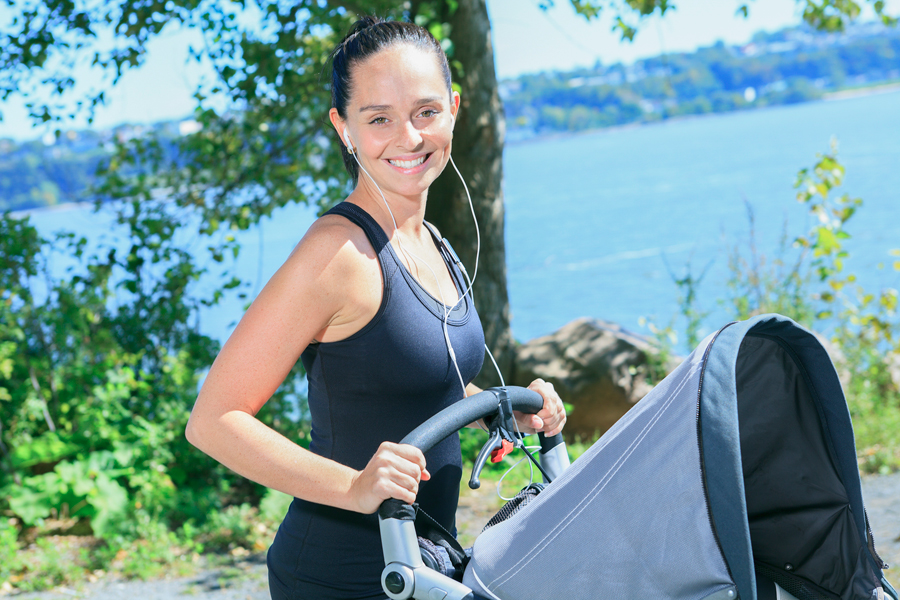
 Walking
Walking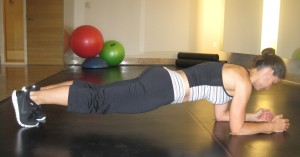 Planks are good exercises that target and tone your abs, thighs and butt. Planks are also a great way to strengthen your abs without straining your back and neck. Begin by lying on your stomach on the floor. Put your forearms on the floor beneath your shoulders and keep your back straight with your legs extended so that your toes touch the floor.
Planks are good exercises that target and tone your abs, thighs and butt. Planks are also a great way to strengthen your abs without straining your back and neck. Begin by lying on your stomach on the floor. Put your forearms on the floor beneath your shoulders and keep your back straight with your legs extended so that your toes touch the floor.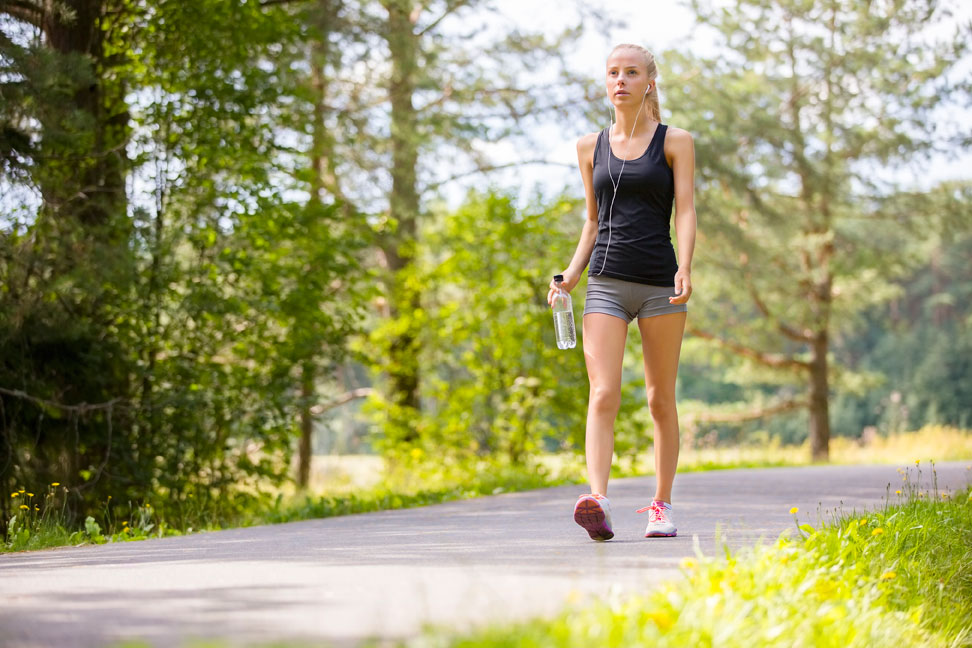
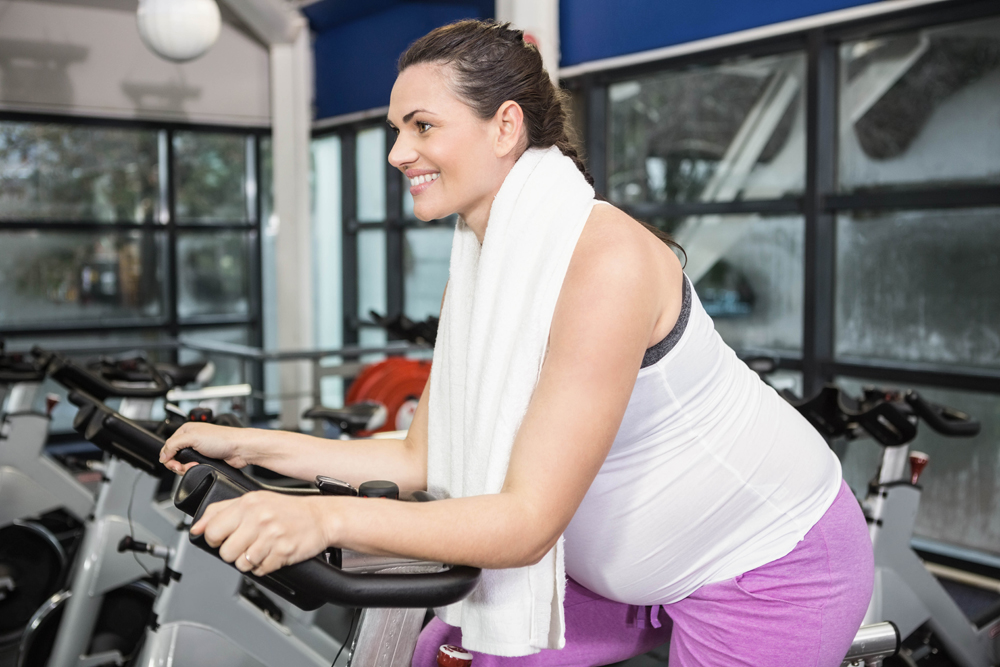
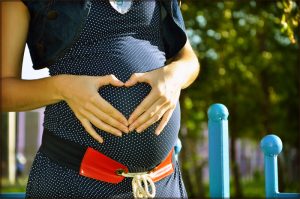 Pregnancy can be a joyous time for women and it is also a period where the body experiences many significant changes. Since exercise can be beneficial to the mother in managing stress and staying healthy, it is important to for every pregnant woman to get clearance from their physician for both starting a new exercise program and/or maintaining her existing one.
Pregnancy can be a joyous time for women and it is also a period where the body experiences many significant changes. Since exercise can be beneficial to the mother in managing stress and staying healthy, it is important to for every pregnant woman to get clearance from their physician for both starting a new exercise program and/or maintaining her existing one. Examples of some exercises that you can do safely while you are pregnant are walking, water workouts, stationary bicycling, yoga and Pilates. Walking is a good option for many pregnant women because it is easy on the joints and muscles and it also gives a total body workout. If however you have low back pain you might consider wearing a pregnancy support belt and/or water workouts to reduce stress on the back. The water supports your weight so you avoid injury and muscle strain. For those who like bicycling and want to continue, stationary bicycling is a great alternative to avoid falls. Modified yoga and Pilates are great for reducing stress, improving flexibility, and focused breathing. Keep in mind that balance poses/exercises can be challenging due to a shift in the center of gravity caused by a growing belly, so it is okay to modify to accommodate this change. Pregnant women should also avoid poses that require them to be still or lie on their back for long periods.3
Examples of some exercises that you can do safely while you are pregnant are walking, water workouts, stationary bicycling, yoga and Pilates. Walking is a good option for many pregnant women because it is easy on the joints and muscles and it also gives a total body workout. If however you have low back pain you might consider wearing a pregnancy support belt and/or water workouts to reduce stress on the back. The water supports your weight so you avoid injury and muscle strain. For those who like bicycling and want to continue, stationary bicycling is a great alternative to avoid falls. Modified yoga and Pilates are great for reducing stress, improving flexibility, and focused breathing. Keep in mind that balance poses/exercises can be challenging due to a shift in the center of gravity caused by a growing belly, so it is okay to modify to accommodate this change. Pregnant women should also avoid poses that require them to be still or lie on their back for long periods.3
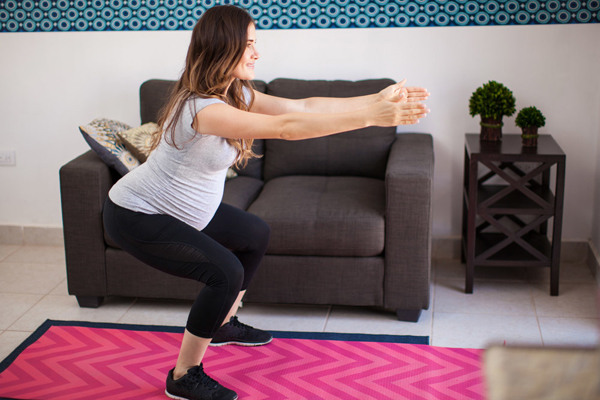

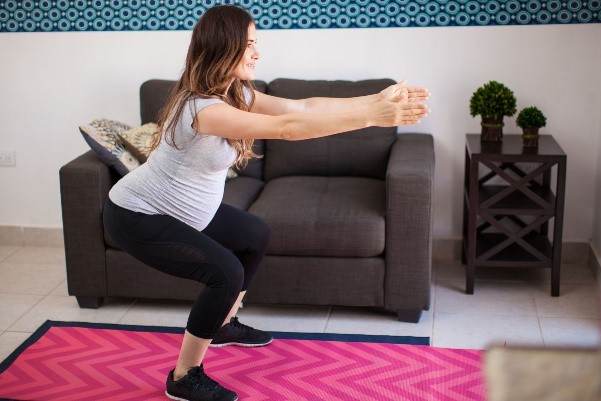
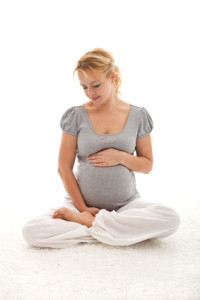 You just found out you are pregnant! Congratulations!
You just found out you are pregnant! Congratulations!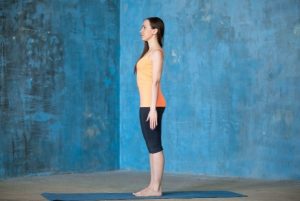 2. Mountain Pose: (pictured right) A body in alignment moves and functions more efficiently. Try taking a deep breath while you slump in a chair. Difficult, right? In pregnancy, many women surrender to gravity and its disproportionate effect on physical alignment. Practice Mountain Pose often throughout your day to familiarize your nervous system with this posture. Over time, your posture will improve.
2. Mountain Pose: (pictured right) A body in alignment moves and functions more efficiently. Try taking a deep breath while you slump in a chair. Difficult, right? In pregnancy, many women surrender to gravity and its disproportionate effect on physical alignment. Practice Mountain Pose often throughout your day to familiarize your nervous system with this posture. Over time, your posture will improve. 3. Squat: (pictured right) Could there be a more perfect exercise to do during pregnancy? Let’s count the benefits.
3. Squat: (pictured right) Could there be a more perfect exercise to do during pregnancy? Let’s count the benefits.